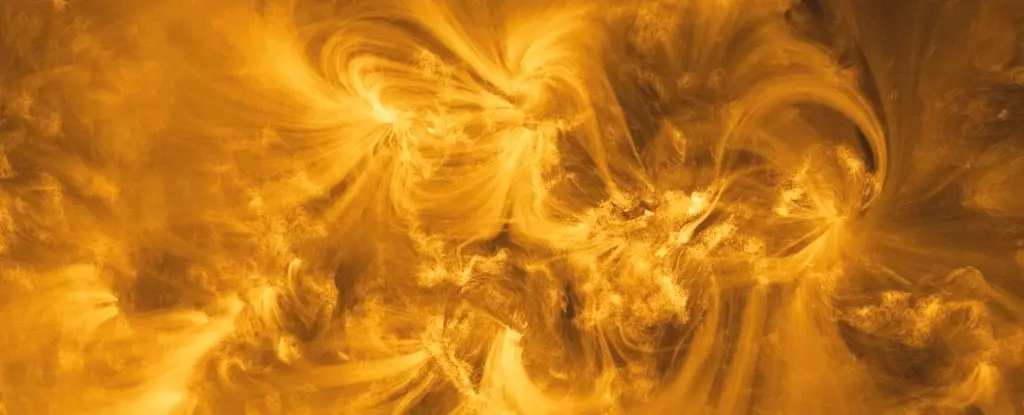When we think of astronomical distances, 74 million kilometers is a staggering figure. However, in the realm of space exploration, particularly concerning our nearest star, the Sun, such distance is merely a part of the journey. The Solar Orbiter, a joint initiative by the European Space Agency (ESA) and NASA, embarked on its mission in 2020 to study the Sun in ways previously thought impossible. This unique spacecraft aims to decode the mysteries surrounding solar phenomena such as solar winds, magnetic fields, and explosive events like solar flares and coronal mass ejections, each of which plays a critical role in understanding not just our star, but the entire solar system.
The Solar Orbiter’s mission is not limited to mere observation; it possesses a wealth of scientific objectives that delve deep into the dynamics of solar behavior. At the core of its mission is the ability to capture high-resolution images of the Sun. Equipped with a suite of instruments that operate in various wavelengths, the Orbiter is like an advanced magnifying glass for solar studies. This capability allows scientists to investigate the layers of the Sun and the interplay between them—an opportunity that enhances our understanding of solar mechanics. For instance, observing the magnetic fields can offer insights into the implications of solar activity on Earth, including geomagnetic storms that can disrupt satellite communications and power grids.
Recently, the ESA released an exciting array of images captured by the Solar Orbiter, showcasing the Sun in different wavelengths: visible light, plasma, magnetic fields, and ultraviolet. These groundbreaking images were obtained using the Polarimetric and Helioseismic Imager (PHI), a tool developed in Germany, and the Extreme Ultraviolet Imager (EUI), contributed by Belgium. The visual data they provide is not only breathtaking but represents the highest resolution images of the Sun ever recorded. The meticulous capturing of these images involved compiling 25 individual captures taken on a single day, showcasing the dynamic nature of solar activity.
According to Daniel Müller, the scientist leading the Solar Orbiter project, comprehending the Sun’s magnetic field is vital for understanding its wider dynamics. The latest results from the PHI instrument reveal intricate maps of the Sun’s magnetic field, showcasing how energy flows and transforms on the solar surface. Visual representations of these complex magnetic flows are essential for predicting the behavior of the Sun, which has profound implications for Earth and its technological infrastructures. Understanding these forces offers crucial insights into the solar wind’s interactions with the Earth’s magnetosphere, which can affect satellite operations and even lead to auroras.
The PHI instrument does more than just mapping magnetic fields; it offers a detailed view of how plasma circulates on the Sun’s surface. The high-resolution images illustrate areas of movement — with cooler regions moving towards the Orbiter presented in blue, and warmer regions in red moving away. This dynamic flow provides not just aesthetic beauty but crucial data about the Sun’s processes and lifecycle. It highlights the interconnectedness of solar activities and sets the stage for deeper theoretical exploration regarding the Sun’s influence beyond mere observation.
One cannot overlook the captivating nature of these images. The ultraviolet views from the EUI depict a swirling dance of superheated plasma, extending from the Sun’s surface into space. These stunning visuals bridge the gap between science and art, inviting us to ponder not only the mysteries of the cosmos but also our own existence within it. In gazing at the intricacies of these solar phenomena, we are reminded of our place within the universe — urging reflections upon nature, evolution, and the vastness of time.
As we advance our capabilities in space exploration, the Solar Orbiter stands as a testament to human ingenuity and curiosity. The images and data collected will not only broaden our understanding of the Sun but will deepen our knowledge of stellar dynamics across the universe. Each discovery serves as a steppingstone to understanding life itself and the fundamental laws of nature that govern the cosmos. The Solar Orbiter’s findings remind us that the quest for knowledge is an unending journey, full of exploration, discovery, and wonder.


Leave a Reply